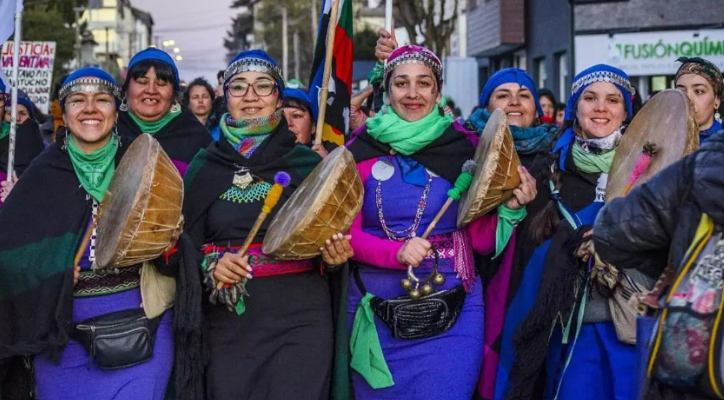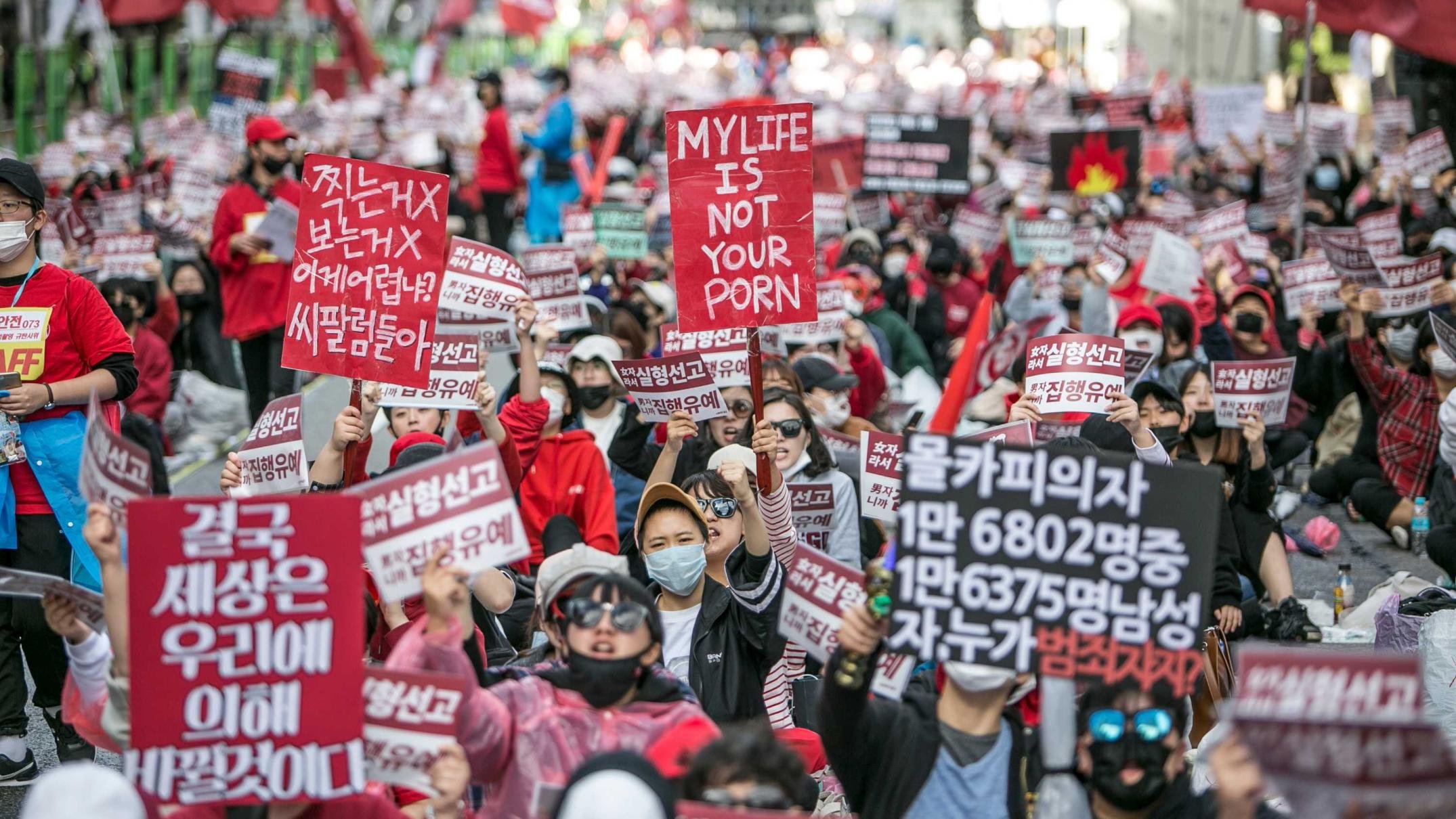Indigenous feminism is a long-criticised term that still lacks a unified definition today. In a world in which intersectionality is at the very basis of every form of discrimination, native feminism fits into a framework practical for defining diverse types of battles held by indigenous women in the fight against gender and colonial discrimination, thereby tracing new roots of empowerment.
BY ANDREA DI MARCOBERARDINO
Introduction
Being an indigenous woman often falls under a condition of intersectional discrimination due to a gender-colonial dichotomy. However, the topic of indigenous feminism has often been neglected by the media and the academic world. The politicisation of issues concerning indigenous populations has typically focused on the claim towards their ancestral lands and problems derived from a colonial heritage, portraying indigenous communities as a mainly patriarchal and masculine-dominated world. Yet, understanding the intersectional condition of indigenous women is crucial for empowering native communities. Indigenous feminism has evolved significantly over the past seventy years, with the first movements starting in British Columbia in the early 1950s. Today, indigenous feminism is not a unified field; different representatives are making different claims of various indigenous communities. This article will delve into case studies related to the indigenous feminism of native women in British Columbia and the Mapuche Feminism in Chile and Argentina, highlighting both differences and similarities between two similar but diverse forms of feminism.
Native Women in British Columbia
Canada, particularly British Columbia, has been the base of robust political identities for indigenous women. These women's political groups, like the British Columbia Indian Homemakers’ Clubs (BCIHA) and the British Columbia Native Women’s Society (BCNWS), have been the driving force behind the shaping of indigenous political agendas. Their work and advocacy, though often unacknowledged, have been instrumental in community and provincial politics, particularly in recognising indigenous claims and the existence of various native communities. Women’s organisations in the early twentieth century, such as the BCIHA and the BCNWS, were not just 'women's groups ', as they were often labelled, but powerful agents of change and political entities.[1] Sarah A. Nickel, in her studies, traced the different phases of Indigenous Feminism in British Columbia and its evolution. From 1950 to 1980, Indigenous Feminism was linked with ancestral notions of motherhood, leveraged to achieve broader political goals for the entire community. This dynamic has significantly shifted in the last four decades. [2] Today, the Native Women’s Association of Canada has embraced the trans-feminist perspective in its pursuit of a more just and inclusive society for indigenous women. On their official webpage, they affirm:
“We are a National Indigenous Organization that defends the rights, delivers programming to, and amplifies the perspectives of Indigenous women, girls, Two-Spirit, transgender, and gender-diverse people in Canada, inclusive of First Nations – on and off reserve, status and non-status, disenfranchised – Métis, and Inuit. We were founded on the collective goal to enhance, promote, and foster the social, economic, cultural, and political well-being of Indigenous women, girls, Two-Spirit, transgender, and gender-diverse people within their respective communities and Canadian societies.”[3]
This inclusive and diverse perspective is a testament to the evolving nature of indigenous feminism and its commitment to social justice and equality. However, this change is not to be understood merely as acquiring a more progressive view by the new generation of indigenous women. From the 50s until the 70s, indigenous women fought for social and political objectives consistent with their indigenous reality and the instruments available.[4] As previously stated, being an indigenous woman means being exposed to possible intersectional discrimination on two grounds: colonial and gender. At the beginning of the second half of the 20th century, the colonial heritage was a heavier burden for indigenous women in Canada. While more rights were recognised over the decades, the dichotomy of gender and colonial discrimination became more evident. The focus of the fight shifted to more trans-intersectional feminist claims, like underlining the importance of individual identities and the diverse types of discrimination that native women can suffer, without abandoning the recognition of colonial issues but enhancing new ways of political fights.[5]
Mapuche Feminism
The Mapuche people represent an indigenous population living in south-central Chile and southwestern Argentina, encompassing various ethnicities and groups united by social, religious, and economic practices and a common linguistic background inherited from Mapudungun.[6] Despite being in a completely different social and political context, Mapuche women have also, over the last decade, increasingly participated in feminist fights with a similar evolution to indigenous feminism in Canada. In an article published by the Mapuche researcher and activist Melisa Cabrapan Duarte, she stated:
"To talk about Mapuche feminism... it makes many of us uneasy. It is said to be colonialist, wigka (invader) in our terms, brought from outside, imposed. However, even without labelling ourselves as feminists, Mapuche women have fought feminist battles for a long time, and with more intensity during the last decade.”[7]
This highlights a similar trend to the one that occurred with Indigenous women in Canada. Despite playing a central role in community politics and fighting major feminist battles, their contributions were only recognised later, and there is still much to be acknowledged about the importance of the indigenous perspective within feminism. However, as previously mentioned, talking about indigenous feminism does not mean talking about a unified field of studies or activist groups. Mapuche feminism has its unique characteristics. Karina Ahumada Pailahueque identified several indicators of feminist ideals and battles in his research of the Mapuche community of Pudahuel. From the linguistic side, in which the dual vision of the world was understood as complementary and not conflictive, to the unity towards the fight against discrimination and male chauvinism.[8] Moreover, Mapuche feminism has also been deeply influenced by the feminist movement of the region, particularly “Ni Una Menos” and the pro-choice, green scarf movement in Argentina.[9] This helped generate discussion, decision-making, and activism, resulting in an increasing number of women in authority roles in their lof (communities) and as members of the Kvme Feleal (circle of authorities of the community).[10]
Nonetheless, it is possible to discuss indigenous feminism as an evolving field of study and activism that stems from a historical lack of recognition and intersectional discrimination. Antonieta Vera Gajardo, in his analysis of Mapuche feminism, underlines how the moments of silence, conflicting expressions, discomforts, and instances of women from the Mapuche community are indicative of a lineage deeply rooted in feminist traditions, reflecting those found within Chicana, Black, Muslim, and Latin American cultures.[11] In this sense, it is easier to identify a trend in a non-unified movement as it is indigenous feminism. For instance, the invisibility and non-recognition of the feminist battle as such and the inability to identify the intersectionality of gender-based and colonial-based discriminations.
Conclusion
When talking about Indigenous Feminism, there is no unity nor a well-identified definition. However, the roots of intersectional discrimination suffered by most native women worldwide make the basis of native feminist activism and its claims common to different communities. Invisibility has long been a significant problem and prevented showing the importance of a movement that claimed recognition of this dichotomic discrimination. Many have justified the lack of recognition of the feminist movement inside indigenous communities, stating it would have been a colonial imposition; nonetheless, as above showed, the unicity of different versions of indigenous feminism shows the limits of these claims. Using the terms native feminism and indigenous feminism is essential to show the fight and claims of indigenous women.[12] In a world in which intersectionality is vital to understanding the roots of violence and discrimination, it is essential to give visibility to intersectional claims like the ones made by indigenous feminism.
References
[1] Sarah A. Nickel, ‘“I Am Not a Women’s Libber Although Sometimes I Sound Like One”: Indigenous Feminism and Politicized Motherhood’, American Indian Quarterly 41, no. 4 (2017): 299, https://doi.org/10.5250/amerindiquar.41.4.0299.
[2] Ibid.
[3] NWAC, ‘Native Women’s Association of Canada’, 2024, https://nwac.ca/.
[4] Aroha Harris and Mary Jane Logan McCallum, ‘Assaulting the Ears of Government’: The Indian Homemakers’ Clubs and the Maori Women’s Welfare League in Their Formative Years.’, in Indigenous Women and Work: From Labor to Activism (University of Illinois Press, 2012), 225–39.
[5] Sarah A. Nickel, ‘“I Am Not a Women’s Libber Although Sometimes I Sound Like One”: Indigenous Feminism and Politicized Motherhood’.
[6] José Bengoa, Mapuche Colonos y El Estado Nacional (Catalonia, 2014).
[7] Melisa Cabrapan Duarte, ‘Hacia Un Feminismo Mapuche’, 22 March 2024, https://www.eldiarioar.com/blog/punto-de-encuentro/feminismo-mapuche_132_11226392.html.
[8] Karina Ahumada Pailahueque, ‘Reflexiones En Torno a La Emergencia Del Feminismo Mapuche La Comuna de Pudahuel’, Revista Punto Género, 2019, 103–10.
[9] Cabrapan Duarte, ‘Hacia Un Feminismo Mapuche’.
[10] Ibid.
[11] Antonieta Gajardo Vera, ‘Moral, Representación y “Feminismo Mapuche”: Elementos Para Formular Una Pregunta’, 2014.
[12] Mishuana R. Goeman and Jennifer Nez Denetdale, ‘Native Feminisms: Legacies, Interventions, and Indigenous Sovereignties’, Wicazo Sa Review 24, no. 2 (2009): 9–13, https://doi.org/10.1353/wic.0.0035.









